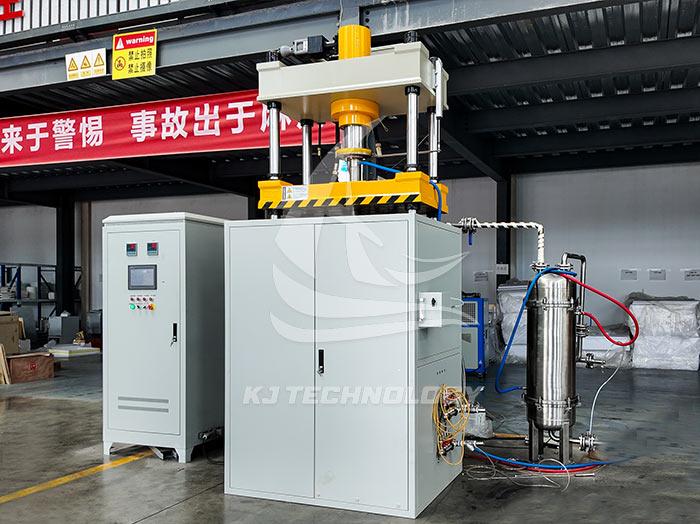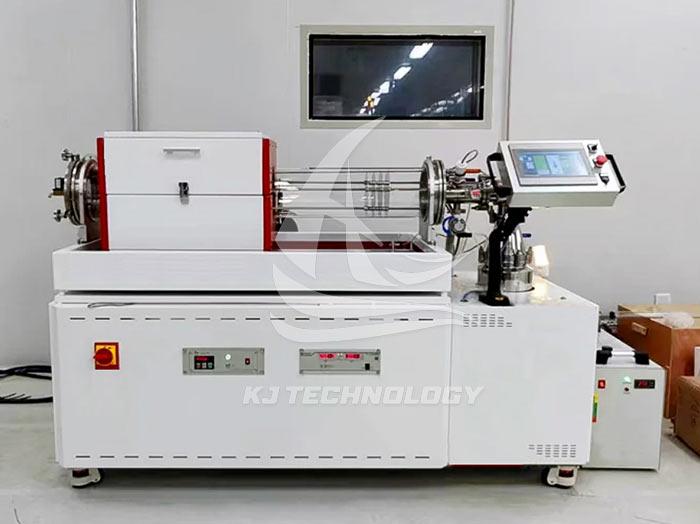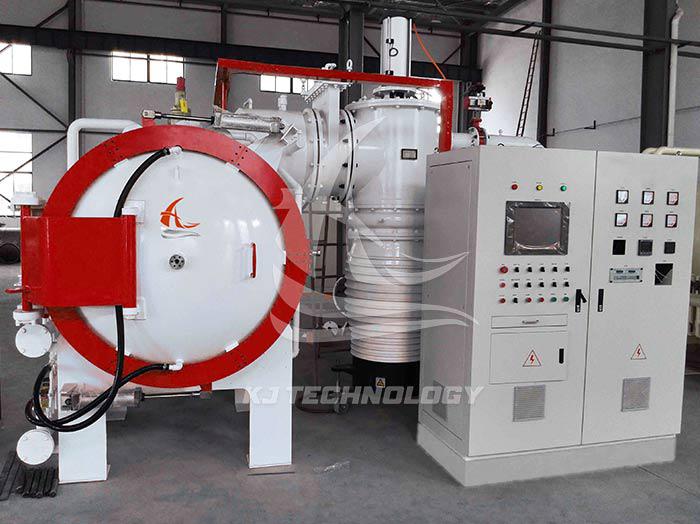Can laboratory powder sintering furnaces burn ceramic materials?
 08-08-2025 Author: KJ technology
08-08-2025 Author: KJ technology
The laboratory powder sintering furnace can be fully used for sintering ceramic materials and is the core equipment in the preparation process of ceramic materials. The following is a detailed explanation:
1. The principle of sintering ceramic materials in laboratory powder sintering furnace
Ceramic materials are usually formed from powdered raw materials such as oxides, nitrides, carbides, etc., and then densified through high-temperature sintering. The laboratory powder sintering furnace precisely controls the temperature, atmosphere, and holding time to induce physical and chemical changes between ceramic powder particles, including:
Particle rearrangement: During the low-temperature stage, particles adjust their position through vibration or diffusion to reduce porosity.
Neck growth: During the medium temperature stage, the particle contact points migrate to form the neck, and the connection strength increases.
Pore closure: During the high temperature stage, the pores gradually shrink until they disappear, and the material reaches high density.
Grain growth: If the temperature is too high or the holding time is too long, the grains may grow abnormally and need to be controlled through process optimization.
2. Advantages of sintering ceramic materials in laboratory powder sintering furnace
Accurate temperature control: Laboratory sintering furnaces are usually equipped with high-precision temperature control systems (such as ± 1 ℃), which can meet the strict requirements of ceramic materials for sintering temperature.
Flexible atmosphere adjustment: Air, inert gases (such as nitrogen, argon), or vacuum environment can be selected according to the type of ceramic to prevent oxidation or promote specific reactions.
Uniform heating: By using thermal radiation or induction heating methods, the temperature uniformity inside the furnace is ensured, avoiding local overheating and cracking.
Small batch experiment: suitable for small-scale trial production in the research and development stage, quickly verifying material formulas and process parameters.
3. Types of ceramic materials that can be sintered in laboratory powder sintering furnaces
Oxide ceramics:
Aluminum oxide (Al ₂ O3): high hardness, high wear resistance, used for electronic substrates, cutting tools, etc.
Zirconia (ZrO ₂): high toughness, low thermal conductivity, used in dental restorative materials, fuel cell electrolytes, etc.
Magnesium oxide (MgO): high melting point, electrical insulation, used in refractory materials, high-temperature electrodes, etc.
Nitride ceramics:
Silicon nitride (Si ∝ N ₄): High strength, high toughness, used for bearings, turbine blades, etc.
Aluminum nitride (AlN): high thermal conductivity, electrical insulation, used for electronic packaging heat dissipation substrates.
Carbide ceramics:
Silicon carbide (SiC): high hardness, high corrosion resistance, used for grinding wheels, bulletproof armor, etc.
Boron carbide (B ₄ C): a superhard material used in neutron absorbing materials, abrasives, etc.
Composite ceramics:
Metal ceramic composite materials: such as TiC Ni based metal ceramics, used for tool coating.
Ceramic ceramic composite materials: such as Al ₂ O ∝ - ZrO2 ₂ layered composite materials, used for high-temperature structural components.
4. Application scenarios of ceramic sintering in laboratory powder sintering furnace
Research and development: Verify the formula and process feasibility of new ceramic materials.
Material characterization: Prepare standard specimens for testing mechanical and thermal properties.
Small scale production: to meet the small-scale needs of universities or enterprises in the research and development stage.
Teaching demonstration: Used for practical teaching of materials science courses.
5. Precautions
Temperature uniformity: Ensure uniform temperature distribution inside the furnace to avoid sample cracking or deformation.
Atmosphere purity: Materials sensitive to the atmosphere, such as nitrides, require the use of high-purity gases.
Cooling rate: Control the cooling rate to prevent cracking caused by thermal stress.
Sample placement: Avoid direct contact of the sample with the furnace and use alumina or silicon carbide pads for isolation.








